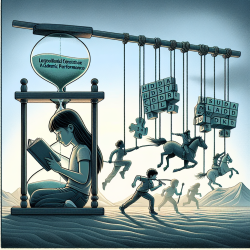Introduction
As the global population continues to grow, the demand for phosphorus (P), a critical nutrient for agriculture, intensifies. However, the current linear P system is unsustainable, leading to environmental challenges such as eutrophication. The research article "A Transition Management Framework to Stimulate a Circular Phosphorus System" provides a comprehensive framework to address these challenges by shifting towards a circular P system. This blog explores how practitioners can implement these insights to enhance their skills and contribute to sustainable phosphorus management.
Understanding Transition Management
Transition Management (TM) is a governance approach that emphasizes the need for coordinated action across different sectors to address complex societal challenges. It involves a multi-level perspective that considers the interactions between niche innovations, regime actors, and landscape pressures. By applying TM, practitioners can strategically guide the transition from a linear to a circular P system.
Key Insights from the Research
- Case Studies: The research highlights US case studies in agriculture, wastewater disposal, and food waste management. These examples illustrate how past transitions in P management can inform future strategies.
- Spaces for Experimentation: Creating spaces for experimentation and collaboration is crucial. Practitioners can facilitate environments where innovative solutions are tested and refined.
- Actor Networks: Mobilizing actor networks is essential for successful transitions. Engaging stakeholders from various sectors ensures a holistic approach to P sustainability.
- Action Strategies and Policies: The research provides actionable strategies and policy recommendations to accelerate the transition to a circular P system.
Implementing the Framework
Practitioners can leverage the TM framework to enhance their skills and contribute to sustainable phosphorus management in several ways:
- Engage in Collaborative Networks: Join or form networks that bring together diverse stakeholders, including government agencies, businesses, scientists, and community members. Collaborative efforts can drive innovation and policy changes.
- Promote Experimentation: Encourage and participate in pilot projects and experiments that test new approaches to P management. These initiatives can provide valuable insights and pave the way for larger-scale implementations.
- Advocate for Policy Changes: Use the research findings to advocate for policy changes that support a circular P system. Engage with policymakers to promote regulations that incentivize sustainable practices.
- Educate and Raise Awareness: Educate stakeholders about the importance of P sustainability and the benefits of a circular economy. Raising awareness can garner support and drive collective action.
Encouraging Further Research
While the research provides a solid foundation, ongoing research is vital to address emerging challenges and refine strategies. Practitioners are encouraged to explore additional case studies, engage in cross-disciplinary research, and contribute to the growing body of knowledge on P sustainability.
Conclusion
Transitioning to a circular phosphorus system is a complex but necessary endeavor to ensure environmental sustainability and food security. By implementing the insights from the research, practitioners can play a pivotal role in driving this transition. Collaboration, innovation, and policy advocacy are key components of this journey. Together, we can create a sustainable future for phosphorus management.
To read the original research paper, please follow this link: A transition management framework to stimulate a circular phosphorus system.










